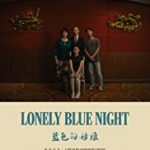True confession time. I’ve been a bit of a late adopter to podcasts partly because I don’t have an iPhone (an entirely different late adopter story) which makes them easier to listen to on the go but mostly because they are missing a key aspect of print…
The ability to skim!
Yup, there I said it. I’m constantly reading about screenwriting, filmmaking and distribution but have stayed away from podcasts and video interviews because it’s difficult to fast forward lest you miss something important. Print’s not like that. It’s far easier to quickly scan a page and make sure you’ve absorbed everything you need to.
But then I was invited to be a guest on Pilar Alessandra’s highly acclaimed screenwriting podcast On the Page and I figured I better get up to speed. So I listened to some of podcasts I often see mentioned on twitter (screenwriter Amanda Pendolino put together a top five list here.) and of course I was immediately hooked.
I love the personalities and the conversational tone. It’s like sitting at Starbucks and eavesdropping on the conversation at the next table. This totally trumps the whole skimming thing. Doing a podcast was even more fun. I’ve been interviewed on the radio and often give screenwriting presentations but this was even better. Pilar’s a great host and Aadip Desai a fabulous co-host. It was great to talk theme (one of my favorite subjects) and within a few minutes I forgot about the microphones and whether or not I was within the required six inch range (from mic to mouth).
So I may be late to the table but I’m finally here. Grab a coffee and click here if you’d like to join in.



